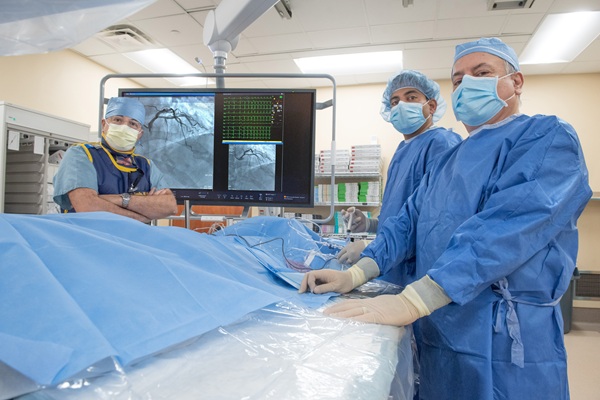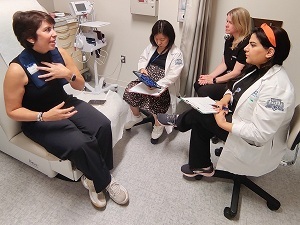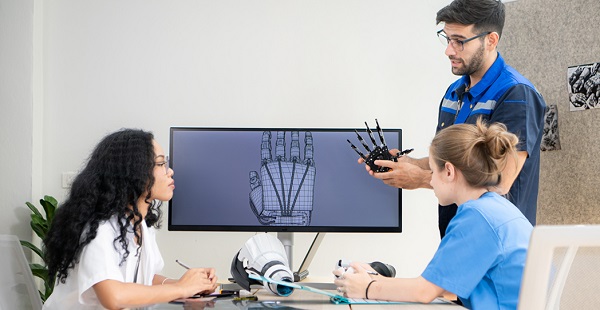Henry Ford Health Leading the Way in Safer Approach to Heart Procedures

Henry Ford Health is outpacing a national trend toward a safer, less invasive approach for opening blocked heart arteries, giving patients a more comfortable experience.
More than 75% of the health system’s percutaneous coronary interventions (PCI) are performed using radial access — threading a catheter through the wrist instead of the groin — compared to a national average of 57.5% in 2022, according to research published in the European Heart Journal.
The study, which analyzed more than 6.6 million PCIs performed in the United States between 2013 and 2022, found radial access cases rose sharply from 20.3% in 2013 to 57.5% in 2022, overtaking the traditional femoral approach, which enters through the groin.
“As the study shows, we believe that patients do better with this approach,” said Dr. Herb Aronow, an interventional cardiologist and Medical Director of Heart and Vascular Services at Henry Ford Health. “Well designed studies have convincingly demonstrated that bleeding complications occur less frequently with a radial than a femoral approach, and among patients who are in the throes of a heart attack, the radial approach is also associated with better survival.”
Radial access often means patients can sit up and move sooner after the procedure, have less discomfort, and face a lower risk of bleeding. The radial access approach has long been the standard in many other countries, but U.S. hospitals have been slower to adopt it.
Henry Ford Health’s high adoption rate reflects a commitment to investment in training, technology, and process improvement in its cardiac catheterization labs.
“Because the recovery period is often shorter following radial than femoral access procedures, the likelihood of returning home the same day after an elective procedure is much greater, and that ends up being a big satisfier for most patients,” Dr. Aronow said. “Both for patient safety and patient experience, we have long been convinced that radial access, when feasible, is the way to go.”
The analysis showed that radial access was linked to:
- Lower in-hospital mortality (absolute risk difference – 0.15%)
- Reduced major access-site bleeding (– 0.64%)
- Fewer other major vascular complications (– 0.21%)
The study did note a slightly higher risk of ischemic stroke (+ 0.05%), but the overall benefits were clear.
###
MEDIA CONTACT: mediarelations@hfhs.org
.svg?iar=0&hash=F6049510E33E4E6D8196C26CCC0A64A4)

/hfh-logo-main--white.svg?iar=0&hash=ED491CBFADFB7670FAE94559C98D7798)






